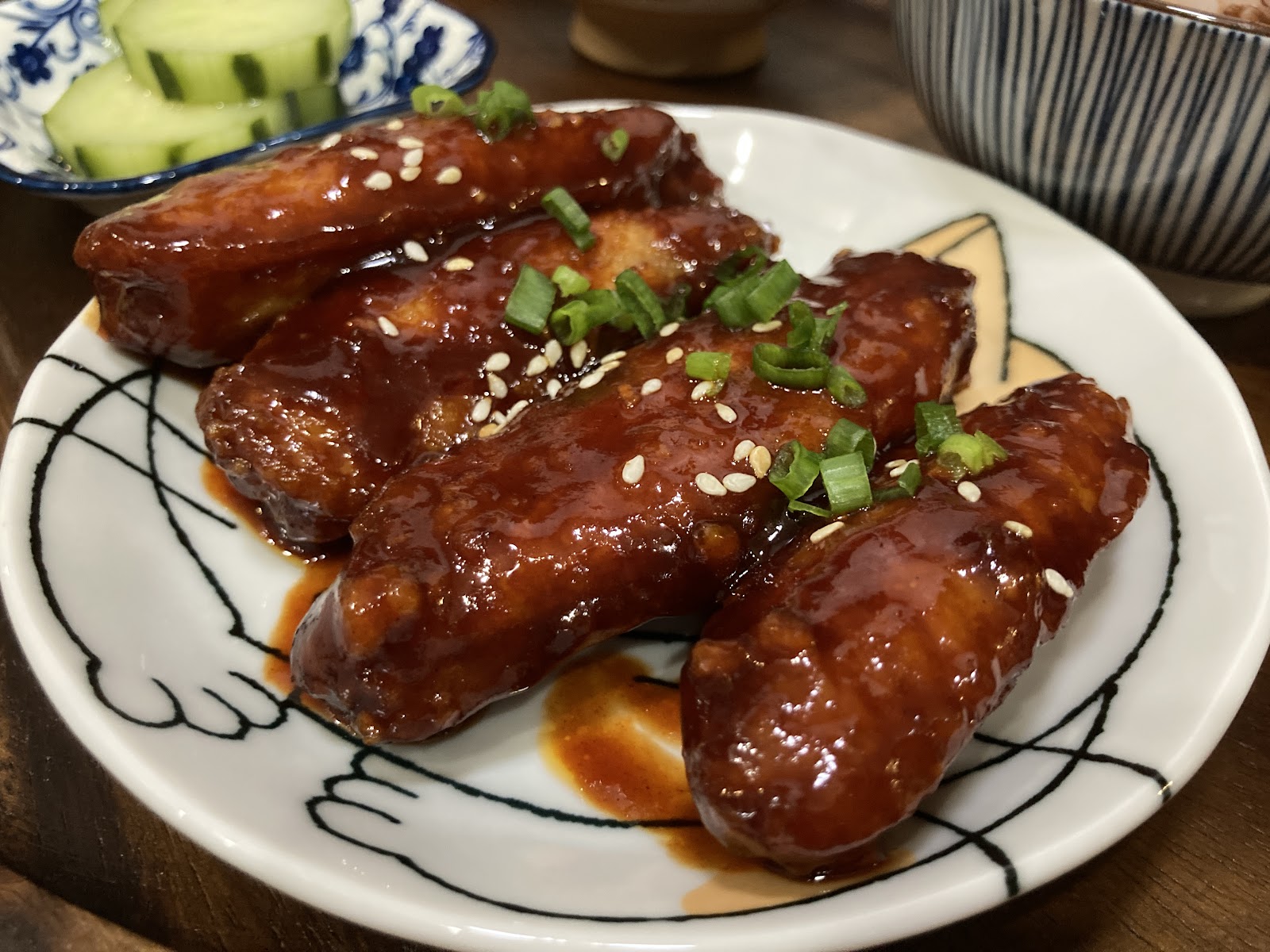Sweet, sticky, savoury chicken coated in a light batter and double-fried: KFC from the other side of the world.

Time: 4/5
Double-frying in small batches precludes multitasking
Effort: 4/5
Delicious chicken but clean-up’s a b**** – save this for the weekend
Double Trouble
Deep frying is a technique that so far eludes me. I’ve had disappointing results with soggy coatings before when oven frying, and when trying to recreate American style fried chicken tenders. There is also the heavy coating that undoubtedly absorbs a lot of oil, even if it doesn’t feel greasy – much too rich for day-to-day consumption. Add to that the issue of the splatter coating everything in the vicinity with a thin film of grease, and the messy operation of straining the oil for reuse (not to mention the work in washing the apparatus involved), and the result is that I find myself reluctant to fry again.
Deep frying in the home context is somewhat of a controversy in the online cooking community (witness, for example, this back and forth between YouTubers). The food science of double frying intrigued me, however. In theory, letting the food rest after the first fry allows moisture to reach the surface, which is then driven off by the second fry to produce a coating that stays crisp for much longer than it would otherwise.
Korean style fried chicken was my excuse to both try double frying, and to buy some Gochujang. I’ve always been curious, having read about its delicious umami power. I don’t regret taking the plunge, and once I tasted the sauce my mind began churning for ideas on how to use the leftovers. Don’t worry about getting more than you can use – Karl from Cheap Dinner Ideas is a friend of this blog, and he made a comprehensive list of ways you can cook with the extra gochujang.
I’d classify this endeavour as a partial success. Still, the hassle has left me convinced that deep fried foods are best left as occasional treats to be enjoyed when eating out. (Or, you could try my Mayo Fried Chicken recipe, which I optimised to minimise cleanup). There’s no shame in admitting that some things are not worth doing in the home kitchen, and as a friend once pointed out one of the values of learning to cook is knowing what’s worth ordering off of a restaurant menu.
Such a rich main dish leaves one desiring a crisp, refreshing counterpoint – I had a cucumber left over from an earlier culinary foray, so a cucumber pickle was a natural choice. Although, if you’re aiming for a full-on Korean dining experience, try pairing the chicken with a chilled spinach salad.

Dramatis Personae
Chicken – 100-200g pax
I chose mid-joint wings because I was craving them, but drumettes or chicken thighs (skin on, if you don mind the calories) would also work.
Marinade
Grated ginger for a signature Asian flavour, but no garlic because that’s more prone to burning during the frying.
Salt and white pepper as opposed to black pepper, mostly for aesthetic reasons. Allow about half a teaspoon per portion.
Batter
While flour is commonly used for frying, corn starch or potato starch is gluten-free. This means the coating has a lighter texture, and there’s no risk of the batter developing gluten and becoming tough if over-mixed. The starch will form a thin coating of batter once it mixes with the juice from the ginger and the moisture on the meat.
Sauce
Gochujang is pretty non-negotiable, given that it’s the titular ingredient. If you out a gun to my head and asked for substitutes I might suggest miso and chilli flakes. Begin with a teaspoon per portion.
Soy sauce for umami and saltiness. Fish sauce would probably work well too. I’d start with maybe a tablespoon per portion and adjust from there. Beware of adding too much liquid though, you could always add salt to adjust salinity without adding volume.
Sugar and honey is for sweetness, but also for giving a syrupy texture to the sauce. I’m not sure what the honey does here, but it has flavour beyond mere sweetness and I thought it might be nice. Be generous, the sauce is supposed to be pretty sweet.
Ketchup is perhaps an unconventional choice (Maangchi please don’t be mad ._. ). The intent is for it to contribute acidity and a bit more sweetness to the sauce. My ketchup was pretty old and I was trying to use it up, but I’m sure rice vinegar or tomato paste would perform the same function.
The garlic I saved to add to the sauce instead of the marinade, finely minced and towards the end of the cooking to preserve its potent pungency.
A drizzle of sesame oil at the end is always nice but I won’t consider it essential. I would say leave it out if your watching your waistline, but if that’s you may I remind you that you’re reading a recipe for chicken that’s fried and slathered in a sugary sauce.
Oil – Enough to submerge the chicken
Choose a neutral-tasting oil with a high smoke point. I used peanut oil, but various other vegetable oils should work well too. If you manage the heat well and avoid burning anything, you could strain and store the excess oil for future use. I found that the leftover oil did impart a mild chicken-y aftertaste that was pleasant when I used it for stir-frying vegetables or frying eggs.
Executive Summary
- Marinade chicken and pickle cucumbers the day before.
- Get rice cooking, and bring oil up to temperature.
- Toss chicken in starch until lightly coated. Fry in batches until blonde, then again until brown. (If superhuman/ cooking with help, use the downtime while frying to prepare vegetable sides.)
- Make the sauce and toss with double-fried chicken.
- Temporarily put aside the dread of cleaning the warzone of a countertop and enjoy sweet, spicy, sticky chicken.
Play by play

Marinating the wings in the pot of my previous rice cooker (RIP). So glad I kept it, it’s the biggest container I own and served me well as a mixing bowl.
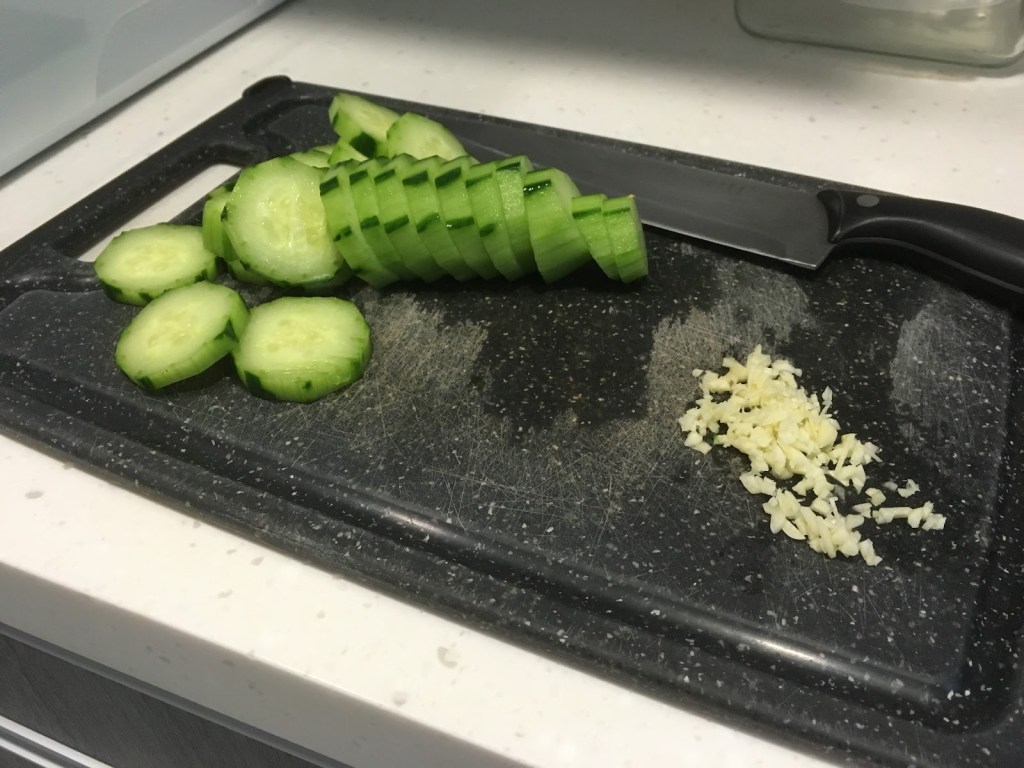
Mince garlic, and cut peeled cucumbers into coins. The cucumbers can be any shape theoretically so cut the however you want, just remember that they shrink and lose some crunch during the pickling process. Leave a bit of the peel on for some colour contrast.
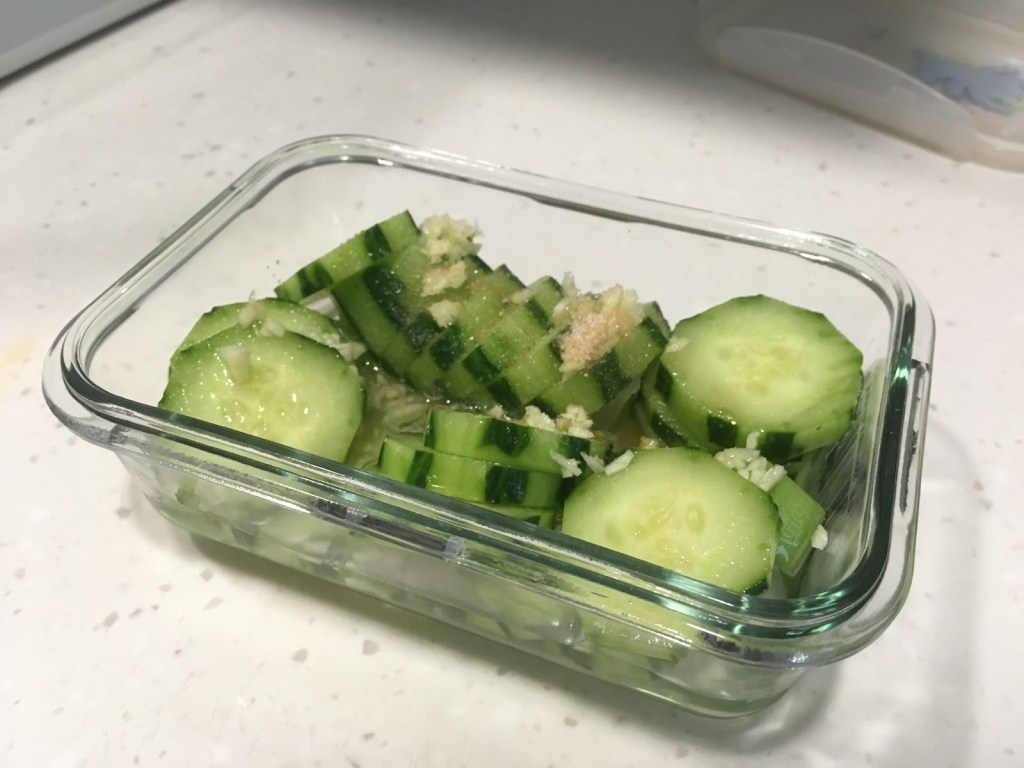
Soak cucumbers and garlic in a 1:1 mixture of vinegar and water (straight vinegar is much too acidic), along with sugar and salt in a roughly 2:1 ratio. They’ll be ready tomorrow. Do use a non-reactive container like glass or ceramic, sometimes plastic picks up odd odours that are hard to get rid of.
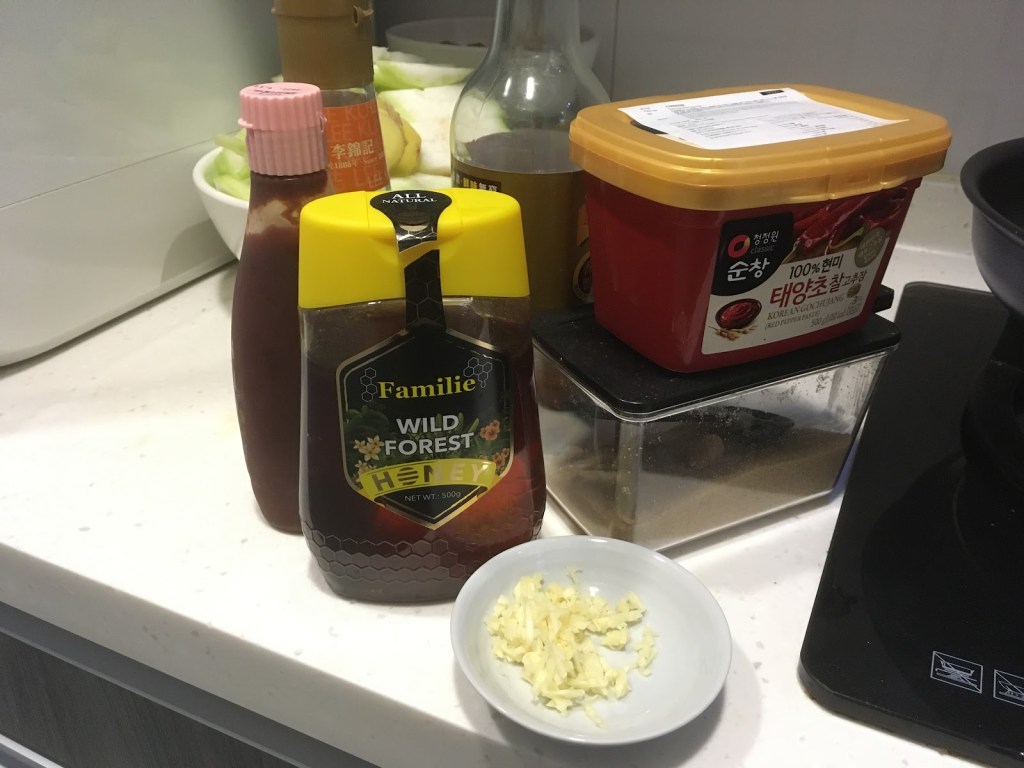
Sauce ingredients. You’ll be kept busy during the frying, so best have everything ready before you start.
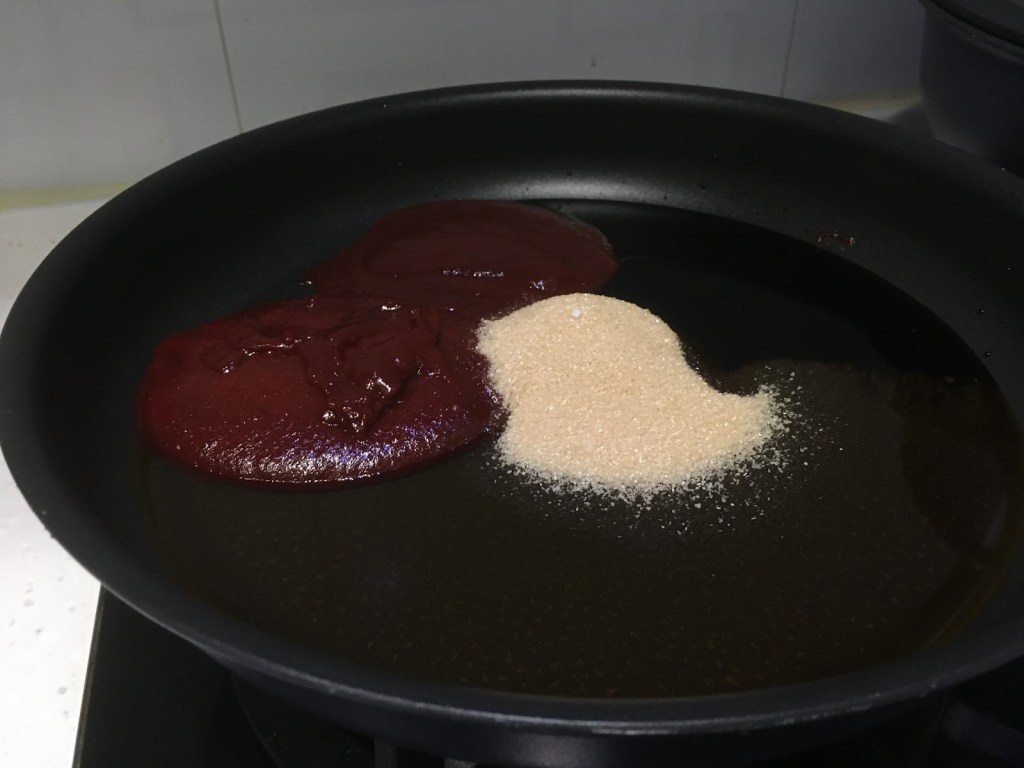

The sauce is done when the sugar melts and the honey is incorporated. Save the garlic and sesame oil for last, after the heat is off.
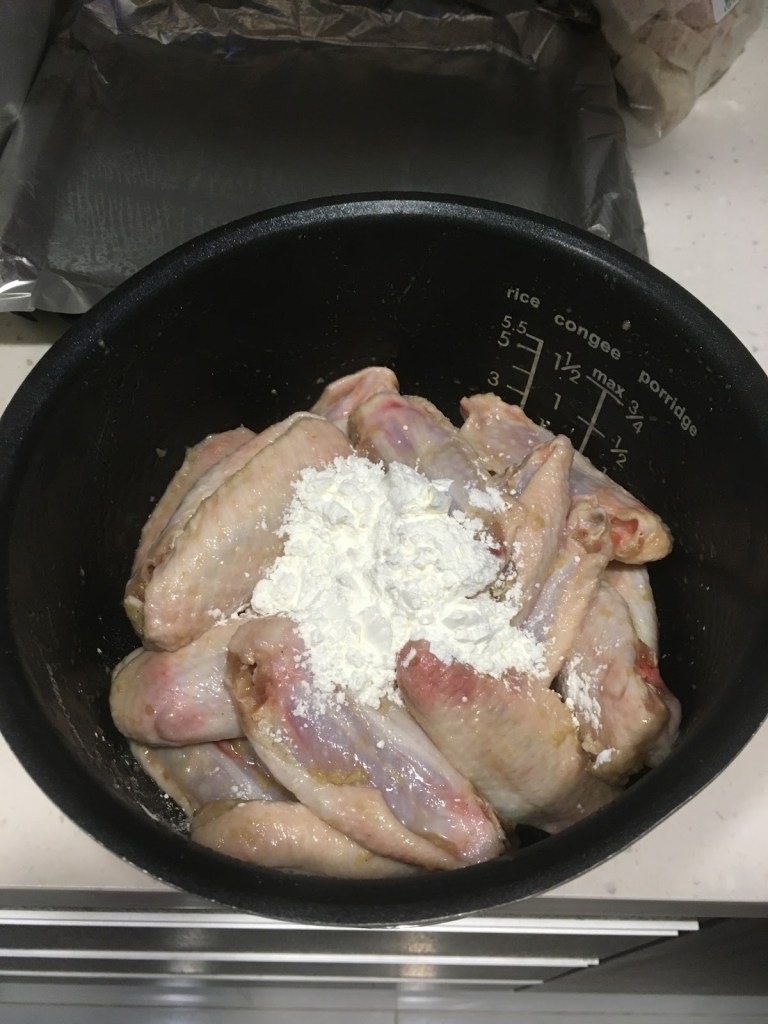

Coat the wings lightly with starch of choice.

Bring oil up to temperature in a pot, preferably a high-sided one which contains the splatter and minimises the volume of oil needed. The oil is hot enough when it bubbles around a pair of chopsticks. My family always used wooden chopsticks. Maybe plastic ones might melt in hot oil, but I’ve never dared to test it out.
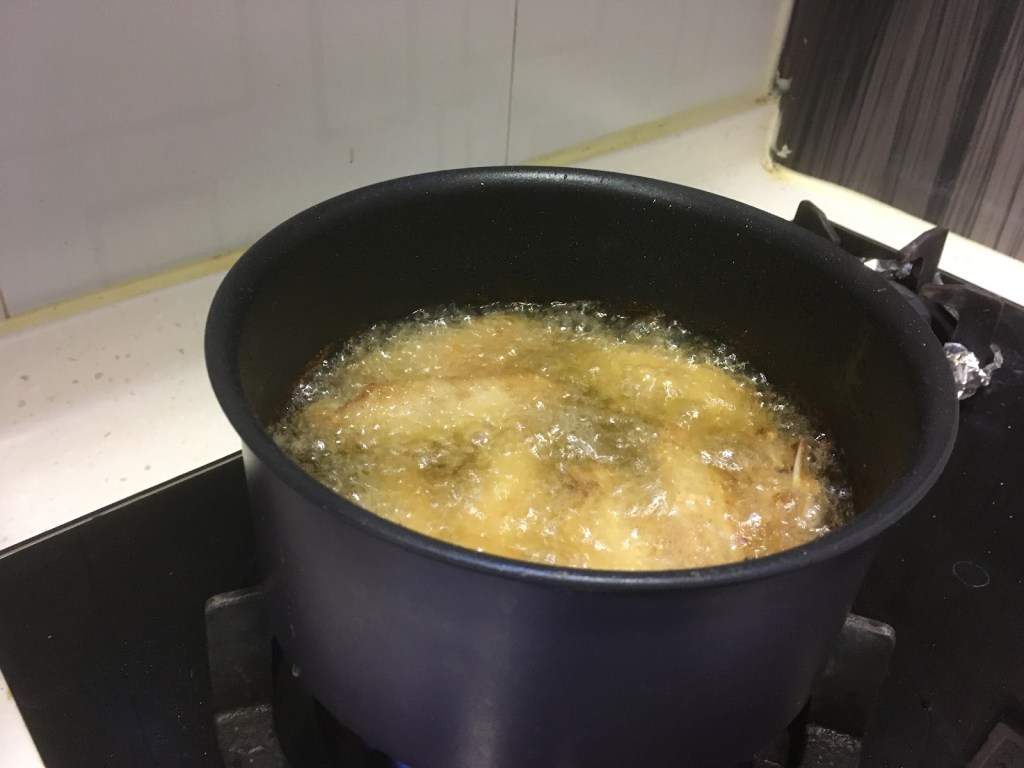
Fire burn and caldron bubble, splatter guard will save you trouble! It’s especially important not to crowd the pan when deep frying, both to prevent sticking and prevent the oil temperature from dropping too much. Beware that unlike beef, one does need to cook at relatively modest temperatures with chicken to avoid burning the outside before the inside gets cooked.
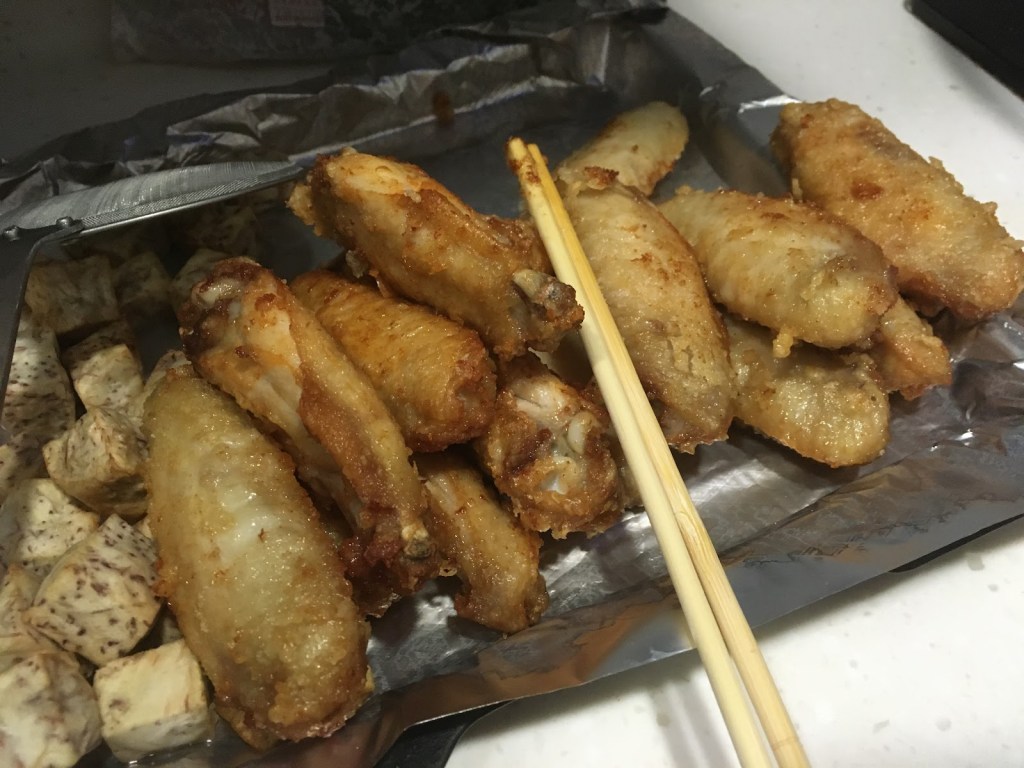
Chicken after the frst fry on the right is a light blonde, and a nice brown after the second fry in the middle. See how light the starch coating is. Ignore the far left, that’s just some taro I also fried to make dessert afterwards (tee hee!)

Once chicken has been double fried, toss it in the sauce to coat.

Garnish with a sprinkling of sesame and spring onion. Serve, of course, with rice. Bean sprouts would have been more in line with the Korean theme, but my girlfriend’s mom gave us some huge hairy cucumbers. Check out the vegetable side dish here.

*crunch* Ahhhhh …
Keep browsing by categories, or by tags:
Beef Blanching Broccoli Cabbage Carrots Cast iron Chicken Cucumber Curry Daikon Dashi Date Night Dried shrimp Eggplant Eggs Fish and seafood Garlic Ginger Glass noodles Gochujang Honey Miso Napa cabbage Onion Oven Pasta Pork Potatoes Rock sugar Salmon Sesame oil Shiitake mushrooms Shrimp Sous Vide Spicy Steaming Stewing Stir fry String beans Sweet potatoes Teriyaki Thai basil Tomatoes Yogurt Zucchini
